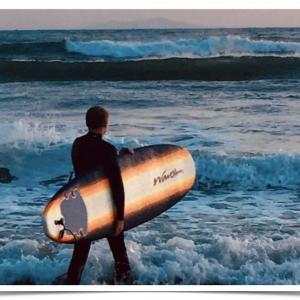Engaging English (F20 ENGL 202-01 Purdue) Dashboard
Description
 This class will teach you how to surf (the Internet) and about the various ways that English studies have been transformed over the last few decades. Starting with some basic close-reading and analysis skills (aided by annotation at COVE Studio), we will then explore how those skills have been increasingly applied to new areas of inquiry (tv, film, culture, critical theory, and politics). Throughout, we will employ new digital tools that change the way we approach our subjects of inquiry, including Web annotation, timeline-building, gallery-building and GIS mapping. As we proceed, we will consider the nature of English studies: What is an English department and how does it relate to the rest of the university? What can you do with an English degree? Why is it necessary to fight for English in an increasingly STEM-oriented world?
This class will teach you how to surf (the Internet) and about the various ways that English studies have been transformed over the last few decades. Starting with some basic close-reading and analysis skills (aided by annotation at COVE Studio), we will then explore how those skills have been increasingly applied to new areas of inquiry (tv, film, culture, critical theory, and politics). Throughout, we will employ new digital tools that change the way we approach our subjects of inquiry, including Web annotation, timeline-building, gallery-building and GIS mapping. As we proceed, we will consider the nature of English studies: What is an English department and how does it relate to the rest of the university? What can you do with an English degree? Why is it necessary to fight for English in an increasingly STEM-oriented world?
Scroll down to "Galleries, Timelines, and Maps" in order to add items to our collective map, timeline and gallery exhibit.
Our texts at COVE Studio:
William Wordsworth, "The world is too much with us" (published 1807) | William Wordsworth, "Surprised by Joy" (published 1815)
Percy Shelley, "To Wordsworth" (published 1816) and "England in 1819" (written 1819, published 1839) | Percy Shelley, "Lift not the painted veil" (published 1824)
John Keats, "If by these dull rhymes" (written 1819, published 1836)
Elizabeth Barrett Browning, Sonnet #22 and 32, Sonnets from the Portuguese (published 1850)
Dante Gabriel Rossetti, "The Sonnet" (published 1881) | Dante Gabriel Rossetti, "The Portrait" (Sonnet 10 of The House of Life; written 1869, published 1881) | Dante Gabriel Rossetti, "Body's Beauty" (Sonnet 78 of The House of Life; published 1881)
Christina Rossetti, "In an Artist's Studio" (written 1856, published 1896)
Gerard Manley Hopkins, "God's Grandeur" (written 1877, published 1918) | Gerard Manley Hopkins, "Spring" (published 1918) | Gerard Manley Hopkins, "As kingfishers catch fire" (published 1918)
Jericho Brown, "The Tradition" (published 2015)
William Butler Yeats, "Leda and the Swan" (published 1924)
Emily Brontë, Wuthering Heights
Joseph Conrad, Heart of Darkness, Part One (published 1902) | Joseph Conrad, Heart of Darkness, Part Two (published 1902) | Joseph Conrad, Heart of Darkness, Part Three (published 1902) | Click here for Cannon Schmitt's COVE Editions version of Heart of Darkness
Galleries, Timelines, and Maps
There is no content in this group.
Individual Entries
Hong Kong first came into the global limelight during the Opium trade in the 19th Century. England at the time really wanted to export tea leaves back to the British Isles but the Chinese regime only accepted silver in exchange. This led to a massive trade deficit for Britain. Afterwards, the British traded Opium for tea leaves, and while this later balanced the trade accounts between the two countries, it led to widespread drug use in China and the country started to bleed silver. This caused a massive trade decifit to China. To combat the opium crisis, in 1839, Lin Zexu (林則徐) led a massive campaign against opium imports by the British by withholding around 20,000 crates of opium and dumping it into the ocean. However, this failed to stop the Opium imports and led to the First Opium War in 1840. Since China's army was in completely disrepair due to poor governance, they ultimately lost the war and had to sign the Treaty of Nanking, which gave Hong Kong Island to the...
moreThis is the Location where Robert E. Lee surrendered to the Union army and General Ulysses S Grant. This moment is noticed as the offical end of the American Civil War. Shortly after this the Union army started to move south, and started the process of emancipating what was a total of 3.5 millon slaves. Here at Appomattox, Grant received a flag of truce from the Confederate army. This small town symbolzies the start of a new chapter for our country and the beginning of our countries fight for racial equality. The battle that led up to this surrender saw about 200 Confederate soldiers. The signed documents of the surrendered took place at the Mclean House. This was the final victory the Union needed to confidently enter the south and implement the Emancipation Proclamation.
moreIn 1965, Ruth Bader Ginsurg attended Harvard Law School in Cambridge Massachusetts. During this time, Harvard law school was primarily male dominated, which became a struggle for Ruth but also gave her motivation and drive to outperform them. Ruth was one of 9 females, in a 500 person class. She faced several instances of gender discrimination from classmates and even from the authories. Authorities would bother her about "taking a mans spot" at Harvard law. But this didnt stop her. Later on, she became the first female member of the Harvard Law Review. During this time, Ruths husband, Martin, was diagnosed with cancer. Ruth transferred to Colombia law school and ended up graduating in 1959 at the top of her class. With gender discrimination being a huge problem duirng this time, Ruth still maintained a fantastic reputation and was an outstanding student.
{{Meta.pageTitle}}....
more